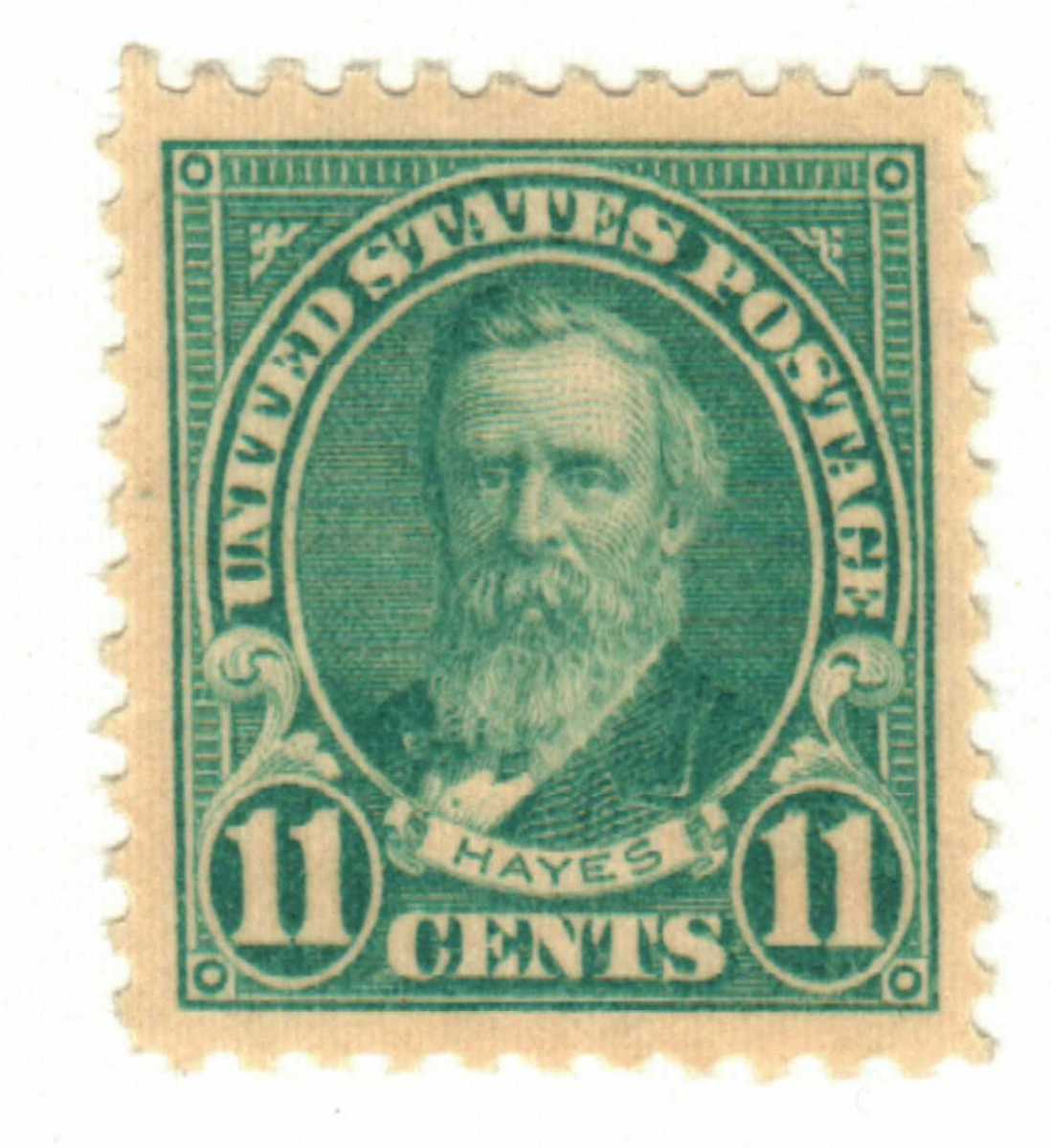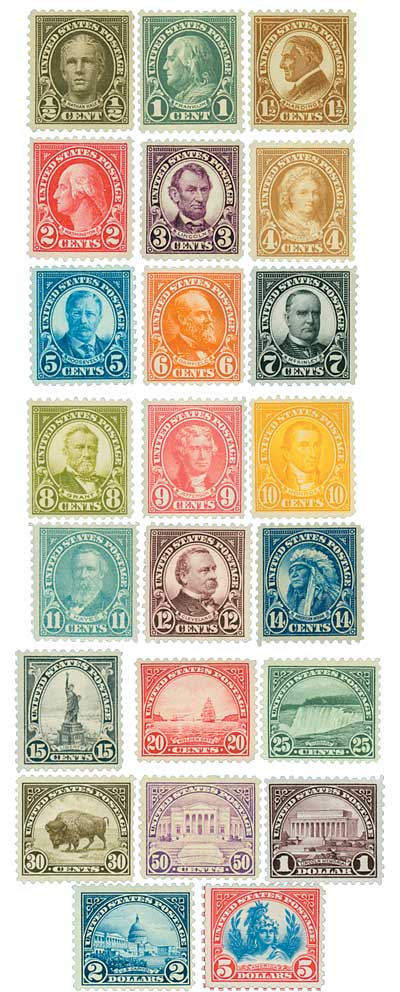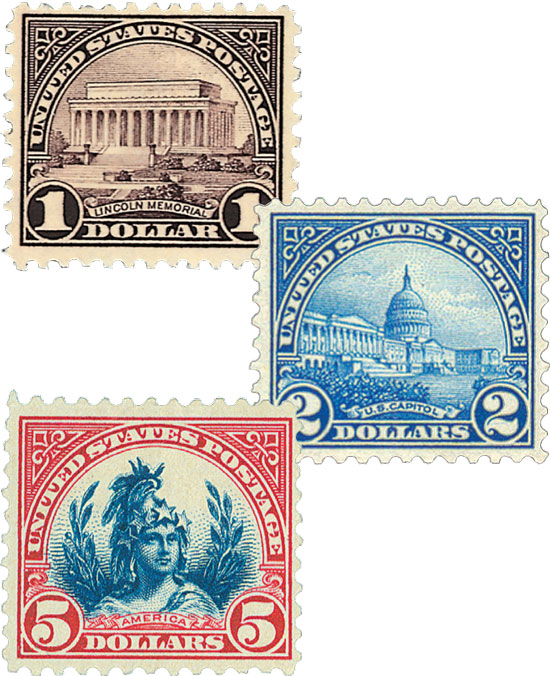

Own scarce classic stamps picturing American landmarks. The high-value Series of 1922-25 issues are among the more desirable U.S. stamps. Scarce and valuable today, they were part of the last flat plate regular series in U.S. history – and the key to completing that series. Send for yours today.
Series of 1922-25
On October 4, 1922, the US Post Office issued the first stamp in Series of 1922-25. This would be the last stamp series printed by the flat plate press. In 1847, when the printing presses first began to move, they didn’t roll – they “stamped” in a process known as flat plate printing. The Regular Series of 1922 was the last to be printed by flat plate press, after which stamps were produced by rotary press printing. By 1926, all denominations up to 10¢ – except the new ½¢ – were printed by rotary press. For a while, $1 to $5 issues were done on flat plate press due to smaller demand. In 1922, the Post Office Department announced its decision to issue a new series of stamps to replace the Washington-Franklin Series, which had been in use since 1908. Many criticized the change, believing it was being made to satisfy collectors rather than to fill an actual need. However, the similar designs and colors of the Washington-Franklin stamps caused confusion, resulting in a substantial loss in revenue each year. In busy situations, postal clerks could not tell with a quick glance if the correct postage was being used. Postal employees requested a variety of designs which could easily be distinguished from one another. Great care was taken to make sure the new designs could not be confused. Although the frames are similar, the vignettes (central designs) are distinctive. Prominent Americans, as well as scenes of national interest, were chosen as subjects for the new series. The Post Office spent several months debating the honorees for the new series and ultimately decided the first stamp would honor President Rutherford B. Hayes. As 1922 marked his 100th birthday, they wanted to issue the stamp on his birthday in his hometown. To meet that schedule, the Bureau of Engraving and Printing had to rush to print the stamp. The die wasn’t finished until September 28, and the stamps went to press on September 30, the same day the first plate was approved. A limited number of stamps were in the first printing – less than a quarter of a million. That first stamp was issued on October 4, 1922, in Hayes’s hometown of Fremont, Ohio. This marked the start of a popular new trend for the post office. The Department developed a plan to first distribute a small number of each stamp on a particular date in a selected town that was of historical and geographical significance to the subject. The plan greatly increased interest and began a new trend of collecting stamps on covers or envelopes postmarked on the first day of issue (First Day Covers). The 5¢ Roosevelt, released on October 27, 1922, in New York City (his birthplace) and Oyster Bay, NY (his hometown) was the second stamp in the series. November 11th, which had been celebrated as Armistice Day since the end of World War I, was chosen as the next date of release of several stamps. The 15¢ Statue of Liberty, representing our friendship with France; the 25¢ Niagara Falls, signifying the goodwill between the US and Canada; and the 50¢ Arlington Amphitheater, picturing the Tomb of the Unknown Soldier were all released that day in Washington, DC. Since President Garfield’s birthday, November 19th, fell on a Sunday, the 6¢ stamp was distributed the following day. Originally, the 2¢ Washington was to be issued on February 22, 1923, George Washington’s birthday. However, due to an unexpected demand, this stamp, along with the 4¢, 9¢, and 10¢, was issued on January 15th. Two days later, on the anniversary of Franklin’s birth, the 1¢ issue was released in Philadelphia. The 3¢ Lincoln and the $1 Lincoln Memorial were the last stamps of the series to be issued on significant dates. Both stamps were released on February 12th in Hodgenville, KY, and Washington, DC. The remaining stamps in the series, the 12¢, 30¢, $2, and $5, distributed on March 20th, and the 7¢, 8¢, 14¢,and 20¢, distributed on May 1st, were issued on dates chosen for their convenience rather than their historical importance.

